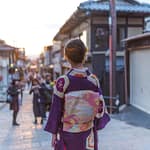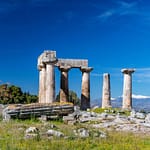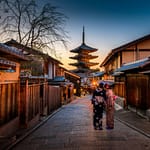TRAVEL AROUND
PHILIPPINES
The Philippines is a breathtaking gem in Southeast Asia, offering a blend of natural beauty, adventure, and warm hospitality. It’s a dream destination for everyone—whether you’re a thrill-seeker, a couple on a romantic getaway, a solo traveler, or someone indulging in luxury.
From cascading waterfalls and jungle treks to pristine beaches and vibrant coral reefs, the Philippines is a playground for all kinds of explorers. Surfing the epic waves or finding peace among the rice terraces, the islands promise a diverse range of experiences that cater to every type of traveler.
Planning your first adventure in the Philippines? This guide will cover everything you need to know—from the best times to visit, top spots to explore, ideal itineraries, travel costs, must-have essentials, to how to prepare for the trip of a lifetime.
Basic resources & travel tips
If you’re planning your first trip, check out our top travel tips to help you get started. We’ve also included some handy resources to make your visit easier and more enjoyable.
Top Destinations in Philippines

Boracay

Coron

Batanes

Cebu

Bohol

El Nido
Smart Travel Tips & Costs for Visiting Philippines
The Philippines is a stunning archipelago, renowned for its pristine beaches, crystal-clear waters, vibrant cities, and lush landscapes. Whether you’re looking for a peaceful retreat or an adventurous getaway, the Philippines has something for everyone. To make the most of your trip, planning is key. Here are some travel tips and insights into costs to help you have a seamless and unforgettable experience.
Best Time to Visit Philippines
- Dry Season (December to May): The best time to visit for sunny weather, outdoor activities, and vibrant festivals. Temperatures are warm (25°C to 32°C), and it’s perfect for beach days and island hopping.
- Shoulder Season (June to September): Expect fewer crowds and lower prices, but occasional rain. Best for quieter experiences, though be prepared for possible storms, especially from July to August.
- Rainy Season (June to November): A good time for budget travelers and nature lovers. The countryside is lush, but expect frequent rain and typhoons, especially from August to October. Ideal for surfing, particularly on the eastern coast.
- Coolest Months (December to February): Pleasant weather with cooler temperatures, perfect for sightseeing. However, this is peak travel time, so book accommodations early.
For the best experience, visit between December and May.
Travel Tips
Getting Around the Islands
- Flights: With over 7,000 islands, flying is often the quickest way to get from one to another. Budget airlines like Cebu Pacific and AirAsia offer affordable fares, so booking early can save you some cash.
- Local Transport: Public transport is an adventure in itself. Hop on a jeepney (the colorful local minibus) or tricycle for a fun, inexpensive ride. Just make sure to confirm fares in advance!
- Boats & Ferries: Island-hopping is a must, and ferries are the go-to for getting between islands. Schedule can be a bit unpredictable, so check times and plan accordingly.
Language
- While Filipino and English are official languages, you’ll find that most people speak English fluently, especially in tourist hubs, making communication a breeze.
Health & Safety
- Vaccinations: It’s best to get vaccinated for Hepatitis A & B, Typhoid, and Tetanus. Bring mosquito repellent—dengue and malaria are present in some regions.
- Insurance: Travel insurance is a must! It covers you for unexpected emergencies like medical care or trip cancellations.
Money & Budgeting
- Currency: The Philippine Peso (PHP) is the local currency. ATMs are common in cities, but always have cash when heading to remote areas.
- Tipping: While not required, leaving a tip of 10% in restaurants or rounding up small bills for services is appreciated.
Weather
- The best time to visit is from December to May, as the weather is dry. The rainy season runs from June to November, with typhoons more common from August to October.
Cultural Etiquette
- Respect is key! Filipinos are some of the warmest people you’ll meet, but it’s always good to be mindful of local customs. Modest dress is recommended in religious sites, and asking for permission before taking photos is always appreciated.
Travel Costs
Accommodation
- Budget: Hostels or basic guesthouses cost around ₱300 – ₱700 ($6 – $14) per night. Perfect for backpackers or those looking to save.
- Mid-Range: For a private room or boutique hotel, expect to pay ₱1,000 – ₱3,000 ($20 – $60) a night.
- Luxury: High-end resorts or private villas can range from ₱5,000 – ₱15,000 ($100 – $300) per night, offering top-tier comfort and amenities.
Food
- Street Food: Dive into the local culinary scene! A quick snack like fish balls or barbecue will only cost you ₱20 – ₱100 ($0.40 – $2).
- Local Restaurants: A satisfying meal at a casual local eatery is about ₱100 – ₱300 ($2 – $6).
- Western Restaurants: If you’re craving something familiar, meals at mid-range restaurants range from ₱400 – ₱1,000 ($8 – $20).
Activities
- Island Hopping: One of the top activities, with tours generally ranging from ₱1,000 – ₱3,000 ($20 – $60). Think pristine beaches, snorkeling, and hidden lagoons.
- Scuba Diving: Experience the underwater world with diving tours ranging from ₱1,500 – ₱3,500 ($30 – $70) per dive.
- Hiking & Trekking: Explore the rice terraces or national parks for an entry fee of ₱50 – ₱500 ($1 – $10), depending on where you go.
Transportation
- Local Transport: Jeepney rides typically cost around ₱10 – ₱20 ($0.20 – $0.40), while tricycle fares may range from ₱50 – ₱200 ($1 – $4), depending on the distance.
- Ferries: Boat rides between islands generally range from ₱200 – ₱1,000 ($4 – $20), depending on the distance.
Daily Budget
- Budget Traveler: You can enjoy a fulfilling day for about ₱1,000 – ₱2,000 ($20 – $40), covering accommodation, meals, and transport.
- Mid-Range Traveler: For a more comfortable experience, you’ll need around ₱3,000 – ₱6,000 ($60 – $120) per day.
- Luxury Traveler: Expect to spend ₱7,000 – ₱15,000 ($140 – $300) daily for high-end resorts, gourmet meals, and premium activities.
Final Word: Travel Smart, Travel Wise
The Philippines offers something for every kind of traveler. Whether you’re soaking up the sun on pristine beaches, exploring lush jungles, diving into vibrant marine life, or savoring delicious local cuisine, the country is full of adventure and new experiences. Be mindful of your budget, respect the local culture, and embrace the journey—because the Philippines is a destination like no other!
Safety standards in Philippines
Healthcare: Major cities have good medical facilities, but rural areas may have limited access. Get vaccinations (Hepatitis A, Typhoid, etc.) and use mosquito repellent for dengue and malaria.
Crime: Petty theft like pickpocketing can occur in crowded areas. Be cautious and use reputable services to avoid scams, especially in tourist spots.
Transportation: Public transport may not meet international safety standards, so use registered taxis or ride-hailing apps like Grab. Watch out for chaotic traffic, especially in cities.
Natural Hazards: The country faces typhoons (June-November), earthquakes, and volcanic activity. Stay informed during the rainy season and follow local safety guidelines.
Cultural Safety: Respect local customs, especially in rural or religious areas. Modest clothing is advised at temples and churches.
Overall, the Philippines is a safe destination with basic precautions. Stay aware, respect the culture, and enjoy your trip!



